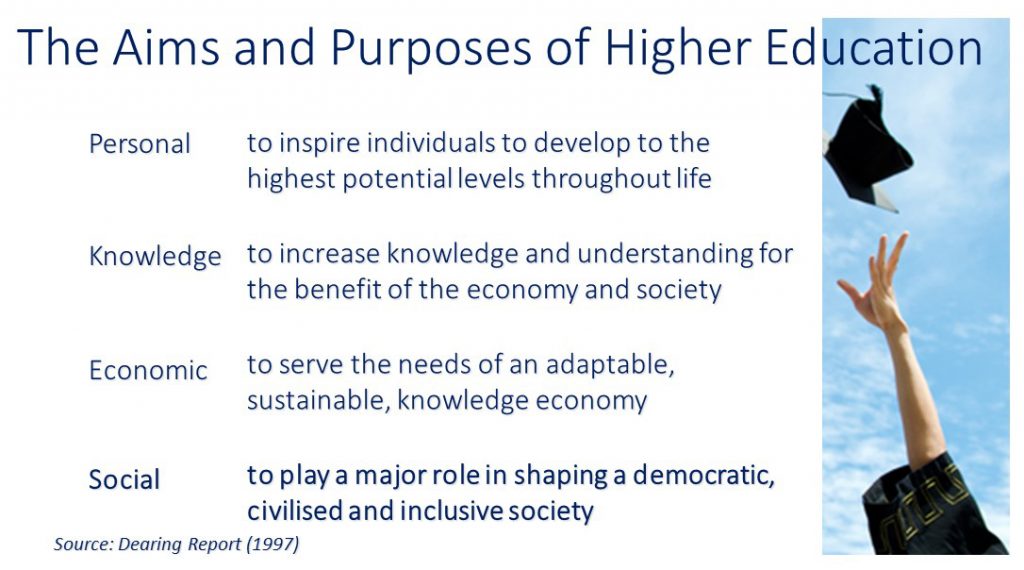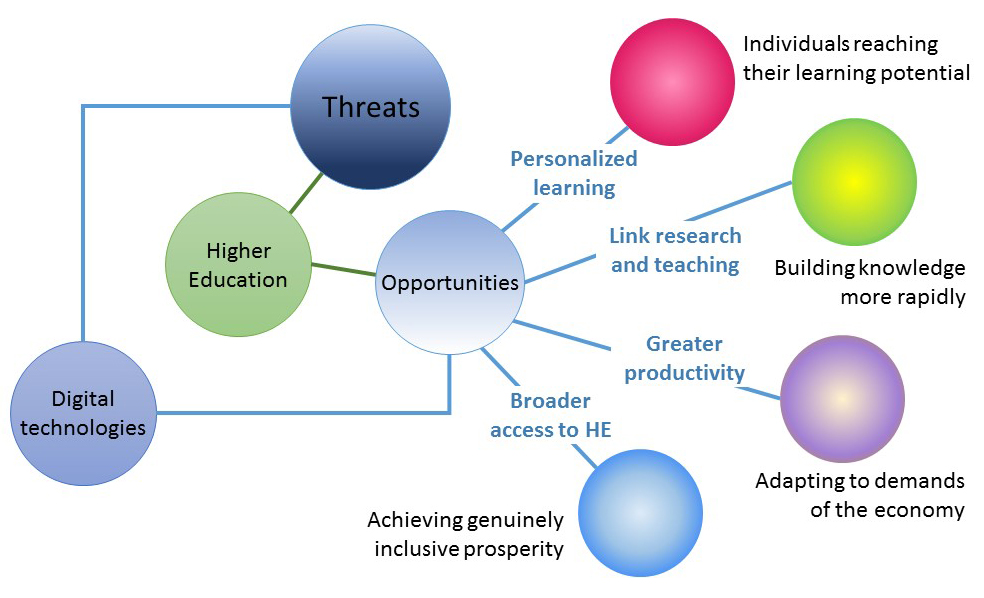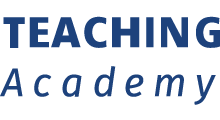Masterclass Speaker Series Public Lecture 2017
Higher Education in the Digital World: Maximizing Opportunities And Minimizing Threats
Written by Dean Tin Shuen Yew (NUS Faculty of Science, Year 3) and Ng Cheng Cheng
On 12 September 2017, Professor Diana Laurillard took to the stage at the National University of Singapore to share insights and thoughts on the threats as well as opportunities that the Digital World offers to Higher Education. Often hypothesized to diminish the relevance of traditional higher education institutions by making knowledge more accessible through innovative technologies, the private sector has not overtaken and replaced the knowledge industry thus far, as previous approaches had viewed education as a mass-knowledge-delivery industry from which people could pick and choose what they wished. This runs counter to the goals of traditional higher education to develop individual minds, which requires personalized relationships and understanding of students, their ambitions, and ways to help them achieve. Nonetheless, the private sector is adept at innovation and investment, and it is thus incumbent on higher education institutions to think through whether and how to enlist the help and technical knowledge of the private sector to develop the learning aids, applications, and online platforms needed to form a truly inclusive, and progressive Higher Education system on a global basis.
To anchor thinking about how best to utilise digital technologies, Prof Laurillard referenced the 1997 Dearing Report on Higher Education in the learning society¹ :


She proposed capitalizing on the opportunities offered by digital technology to achieve more personalized learning, links between research and teaching, greater productivity and broader access to higher education.
For personalised learning, particular types of learning games and tools were suggested for specific groups of students:
- To stretch top achievers – games requiring the application of concepts to complex situations e.g. NASA’s Mystery Asteroid game on http://nasawavelength.org/
- To push students who can do better – learning analytics tools to provide feedback in relation to others e.g. University of Maryland Baltimore County’s Check My Activity that allows learners to compare their own level of activity against an anonymous summary of course peers https://blog.blackboard.com/student-facing-learning-analytics-self-regulated-learning/
- To help students with learning disabilities – specialized software designed with meaningful feedback and increasing levels of difficulty to improve and establish conceptual learning e.g. like “NumberBeads” which allowed for students with dyscalculia to successfully understand the relationships between numbers on a self-regulated basis, learning at their own pace.
- To motivate students who repeatedly fail – tools to spur them on through positive reinforcement in the form of incentives and rewards for small successes e.g. E-portfolios with digital badges.
- Any other students who can benefit from a mixed learning approach utilizing any/all of the above.
To link research and teaching, Professor Laurillard suggested the institutional use of accessible large online platforms that connect multiple learning and teaching-related resources and tools such as MOOCs, filmed lectures and readings, research profiles, research blogs, online discussions and debates.
For greater productivity, community-oriented software e.g. UCL’s The Learning Designer could allow everyone to share the burden of innovation by building on each other’s work and experiences through continuously adapting, testing and refining efficient pedagogical models/frameworks, essentially allowing teachers to take on the role of ‘design scientists’.
Lastly, with regard to Higher Education’s moral imperative to help those who had their access to education disrupted or curtailed (like refugees or those lacking digital skills from emerging economies), a hybrid system was proposed. Whereas traditional Higher Education tends to adopt a fee-paying scheme with enforced selectivity and a formal award system translating to limited enrolment, in contrast to MOOCs which offer open and free courses but lack feedback and a formal award system leading to low completion rates, a hybrid model could be adopted. In such an inclusive ‘freemium’ model, MOOC courses become readily open to the curious or willing, but include a paid-for certificate system to incentivize users to see the course to completion. Eventually, there can be cascading of learning by the qualified course-completers to local groups. These course-completers and local groups could in turn contribute back to the community’s learning by feeding their experiences back to inform research. In this way, they can scale up research co-design in an adaptive network model.
Prof Laurillard acknowledged that the examples mentioned were but a few among many ways in which digital technology could be optimised. Success would be dependent on governmental policies and institutional leadership which understood the nature of higher education, the value and potential of digital technologies, and had the willingness to invest. Only then can higher educators’ inventiveness, exploration and experimentation in the use of digital technologies yield opportunities for both practitioners and students.
“Education is critical for building a better world. Digital technology is the means by which we do this on the large scale.”
¹produced by the UK National Committee of Inquiry into Higher Education

